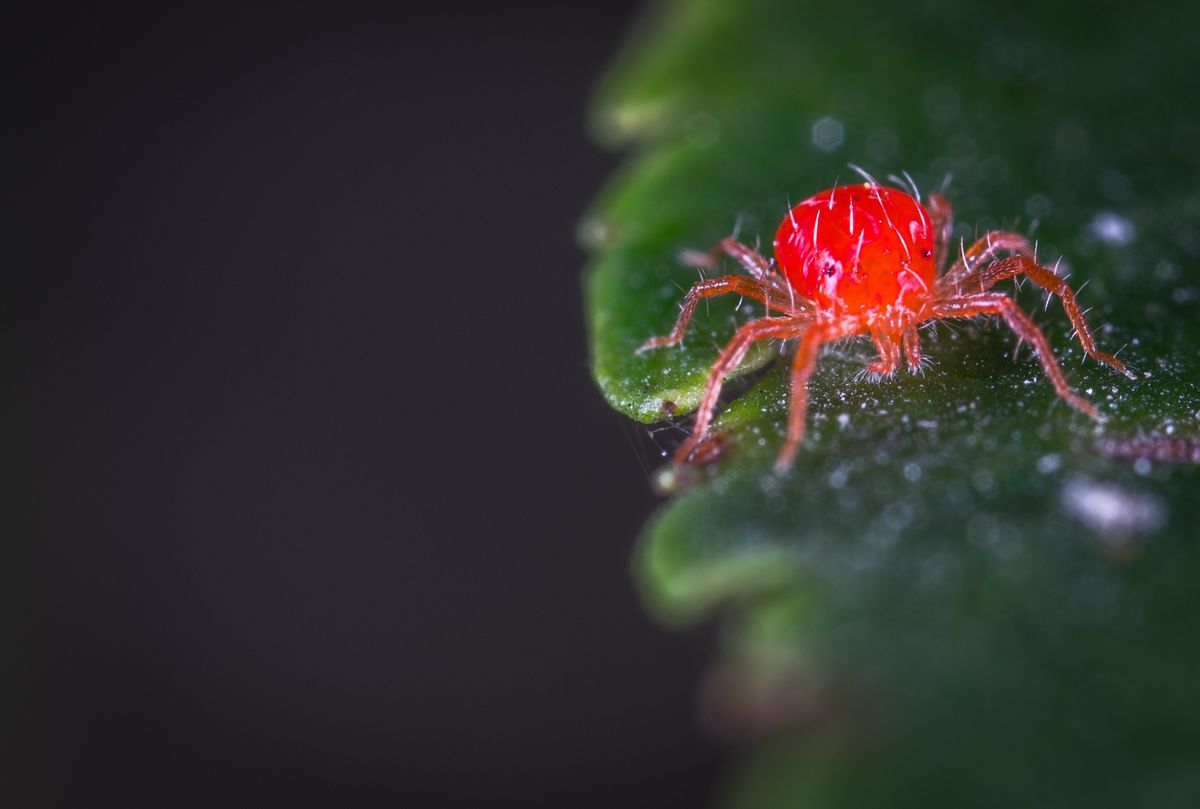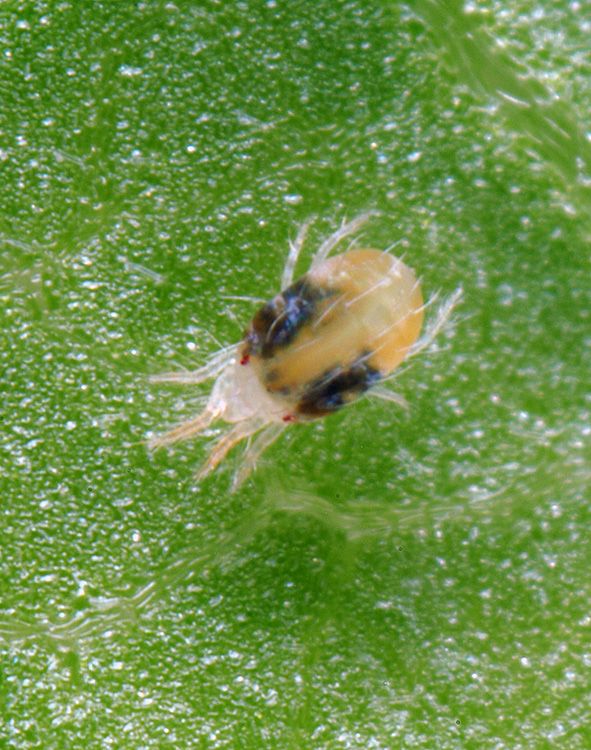Spider Mites
Spider mites are minuscule arachnids that infest plants and feed on their leaves.

These pests can cause significant damage to both indoor and outdoor plants as they suck the juices out of the plant tissues, leaving behind a stippled or discolored appearance.
To effectively identify, treat, and prevent spider mite infestations, you must recognize the signs of their presence and take appropriate action.
This may involve releasing natural predators, using targeted sprays, or implementing cultural practices to maintain plant health.
Identifying Spider Mites
Spider mites are tiny pests, often red, green, or yellow, known for damaging indoor and outdoor plants.
They are related to spiders and produce fine webbing, which can signify their presence.
Mite eggs are oval and translucent, while adult mites can appear as tiny moving dots on plant leaves.
To identify spider mites, look for the characteristic stippling on plant leaves resulting from feeding on the plant's tissues.
Check both sides of the leaves and any webbing for adult mites, eggs, or their life cycle stages.
Different types of spider mites, such as the spruce spider mites, may vary slightly in appearance, but the signs of their presence remain similar.

Understanding Spider Mites
Spider mites are tiny arachnids that feed on the juices of plant and tree leaves, causing damage to gardens and landscaping.
They thrive in both summer and winter, with population growth typically occurring when humidity is low.
During summer, these pests can produce multiple generations, each reaching maturity in one to two weeks.
To prevent infestations and protect your plants, it's essential to recognize the signs of these mites and take appropriate preventive measures.
The Damage Caused by Spider Mites
Spider mites cause damage to your plants by piercing the plant cells with their mouthparts and sucking the plant juices.
This feeding activity results in yellow or whitish spotting on the top of the leaves while the mites feed on the lower leaf surface.
As the infestation progresses, leaves may develop dry, brown, or dark spots, and the overall health of your plant deteriorates.
This is due to the loss of chlorophyll and the resulting inability to photosynthesize, leading to reduced water and nutrient uptake effectively.
In severe cases, needles and leaves can become discolored or fall off, and the plant may perish.
Regular inspection, early detection, and appropriate treatment are crucial in preventing extensive damage caused by spider mites.
Treating Spider Mite Infestations
Remove affected plants or prune heavily infested leaves and stems from treating spider mite infestations.
Dispose of the debris properly to prevent re-infestation.
If the infestation is on outdoor plants, using a hose to blast spider mites off the undersides of leaves can be an effective removal method.
For a more targeted approach, combine horticultural oil, insecticidal soap, or neem oil with water and spray this mixture onto both sides of your plant's leaves.
Ensure to do this early morning or evening to avoid damage to your plants under hot, dry conditions.
Regularly monitor your plants and reapply treatments when necessary.
Additionally, encourage the presence of beneficial insects in your garden or greenhouse, as they can help in the natural control of spider mites.
Preventing Spider Mite Infestations
Maintaining a healthy environment for your plants is crucial in preventing spider mite infestations.
Keep humidity levels up, as dry conditions favor their growth, and ensure proper air circulation around your plants, both indoors and outdoors.
Introduce natural predators such as lacewings, predatory mites, and other beneficial insects to your garden, as they can help keep spider mites under control.
Regularly inspect the undersides of leaves for signs of larvae, and consider using biological control methods and integrated pest management techniques for protecting your fruit trees, houseplants, and outdoor plants.
Spider Mites and Other Pests
Spider mites are tiny arachnids, closely related to spiders and ticks, that feed on the leaves and stems of various plants.
They can cause significant damage to your plants by sucking out their nutrients.
Other garden pests, such as aphids and whiteflies, can also cause similar damage to your plants, making it essential to monitor and manage all of these pests together.
To prevent infestations of spider mites and other pests like ticks, it's crucial to maintain a healthy and diverse garden ecosystem.
Encourage the presence of predatory insects, such as ladybugs and lacewings, which feed on pests like spider mites and aphids.
This biological control method will help keep the harmful pests in check, limiting the damage they can inflict on your plants and ultimately keeping your garden healthy and thriving.
Frequently Asked Questions
How to identify spider mites on plants?
To identify spider mites on your plants, look for tiny, spider-like pests clustering on the undersides of leaves, causing damage by sucking on the tissues. Additionally, leaves may exhibit yellowing, small white speckling, or webbing.
What are effective treatments for spider mites?
Effective treatments for spider mites include using chemical eliminators and introducing predator insects, like ladybugs and predatory mites, that feed on the spider mites. Be sure to follow the label instructions for chemical treatments and provide a suitable environment for predator insects.
How can I prevent spider mite infestations?
To prevent spider mite infestations, regularly inspect your plants for signs of their presence, and maintain good cultural practices like proper watering and fertilization.
Furthermore, avoid using broad-spectrum insecticides, as they can kill natural spider mite predators and contribute to a resurgence of mite populations.
What natural methods can be used to control spider mites?
Natural methods to control spider mites include insecticidal soaps and horticultural oils that suffocate the mites.
You can also introduce beneficial insects such as ladybugs, lacewings, and predatory mites, which feed on the spider mites and help reduce their population.
Are spider mites harmful to humans?
Spider mites are not harmful to humans; they do not bite or transmit diseases. However, they can cause significant damage to plants by sucking out the sap from leaves, leading to poor growth and eventual death of the plant if left unchecked.
Can spider mites survive in soil?
Spider mites typically do not survive in soil, as they mainly live on the leaves and stems of plants.
However, some species may drop to the ground to seek shelter during harsh conditions, but they generally do not thrive well in soil and will eventually return to the plants.


